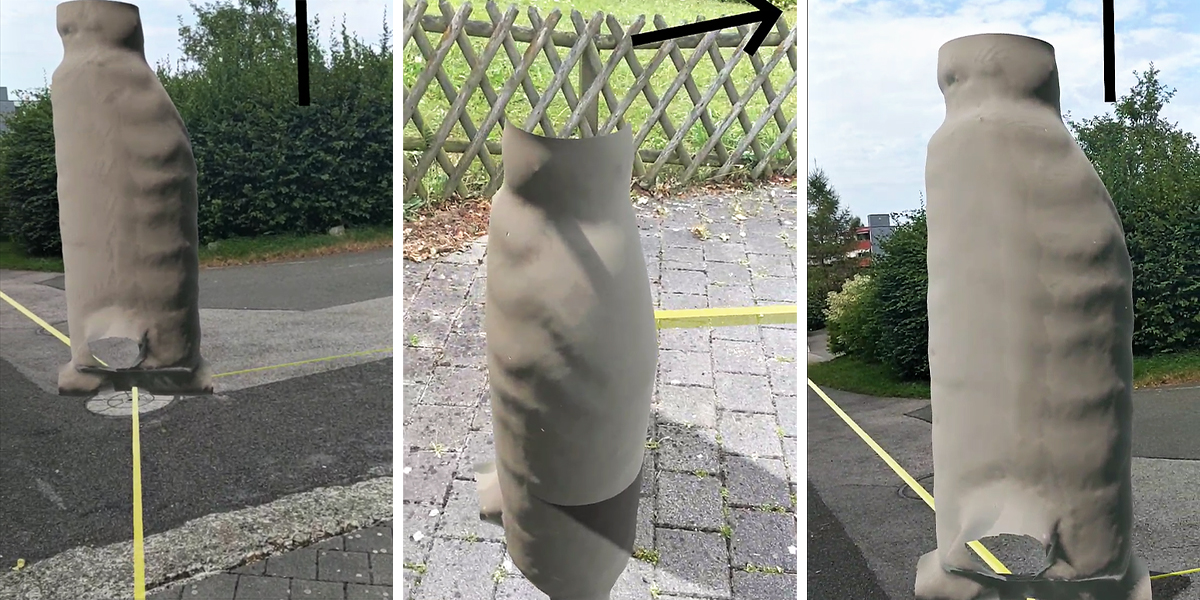In September 1998, American football fans witnessed something new on their televisions: a virtual, yellow line (representing the first-down line) superimposed on their screens. This was created by the engineers at Sportvision Inc., a company that provided virtual viewing enhancements for sporting events. The first-down line is one of the earliest examples of augmented reality (AR) at work.
What Are Augmented Reality and Virtual Reality?
AR is an enhanced, interactive version of a real-world environment that’s achieved through combining digital visual elements, sounds, and other sensory stimuli via holographic technology. It combines both the digital and the physical worlds, adding digital elements to real-life views. AR is similar to virtual reality (VR), which creates a simulated, immersive environment that places the user inside of the virtual world. VR experiences are meant to isolate the user from the real world and typically require the use of a headset and headphones to accomplish this.
Together, these virtual technologies are changing the way that businesses function across industries. In the water and wastewater sectors, AR and VR are already helping workers visualize buried utilities from aboveground, enabling the public to tour their local treatment plants, and more.
Current Uses of AR/VR in Water and Wastewater
Melbourne Water Utility
Since 2017, Australia’s Melbourne Water utility has been using VR as an alternative to traditional hazard identification processes during plant design development. Melbourne Water uses an HTC Vive VR headset and gaming laptop that enable users to walk through a virtual model of their Western Treatment Plant. In contrast, the prior method for hazard identification included an extensive review process in which plant operators, managers and technicians carefully examined diagrams, blueprints and CAD drawings to identify potential safety concerns and design defects.
“With the old approach, we picked up just six [design] problems,” Scott McMillan, Melbourne Water’s innovation and safety manager noted in a 2018 interview. “In VR, where users can walk through the plant, we found 20. It’s clear to us that a VR perspective is a massive step forward for design review.”
The utility also created an AR app that allows users to experience the Western Treatment Plant wherein users get a 360-degree view of each stage of the treatment process.
ACCIONA
ACCIONA, a water treatment and management company, is the owner of the Seawater Desalination Plant in Torrevieja, Spain and the Atotonilco Wastewater Treatment Plant (WWTP) in Hidalgo, Mexico. The Torrevieja plant uses reverse osmosis technology, which generates a lower environmental footprint than other technologies and even allows for the recovery of most of the energy used throughout the process. The Atotonilco WWTP treats about 60% of the wastewater from Mexico City and is the largest WWTP to be built in a single phase.
ACCIONA created virtual reality tours that allow members of the public to “visit” these high-tech facilities. These tours give more people outside of the water/wastewater sector the opportunity to understand the importance of these plants and learn more about the role they play in our daily lives.
The Future of Virtual and Augmented Reality
Going forward, AR and VR will provide immeasurable improvements to the water and wastewater industries. And we’re already seeing the power of these emerging technologies today. Using detailed geographic information systems (GIS), inspection management solutions like WinCan software can create 3D models of underground assets. When used in conjunction with AR, this GIS data lets workers visualize sewer and water infrastructure in real time without going underground, making it easier to understand and maintain these assets.
While the possibilities are endless, here are some more ways in which these technologies are beginning to create industry-specific efficiencies.
- Supplementing training instruction for new wastewater employees
- Providing up-to-the-minute information on water quality in treatment plants
- Allowing off-site experts to provide real-time guidance during field service
- Involving community members in sewer/storm infrastructure planning
Want to learn more about the future of wastewater? Get to know the innovative AI abilities of WinCan’s Sewermatics.

